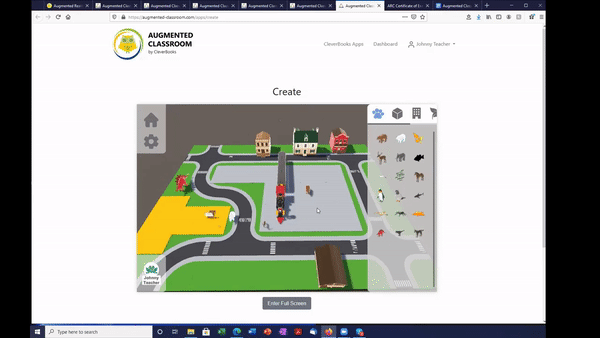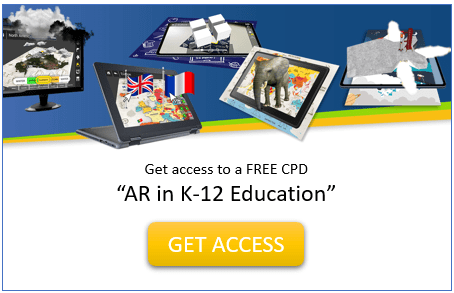Reading time: 8 minutes
Future for Education: Technology
Technology disruption is causing a massive shift in the job market with millions of jobs rendered obsolete, whilst at the same time new positions and industries are being created. Many jobs that exist today will disappear in the next two decades. Along with this change in the job market, there is also a rapid expansion of the knowledge needed to be competitive in the labour force.
The challenge is on two fronts: how to help the workers lacking ICT support who risk losing their jobs, becoming victims of artificial intelligence and automation: and how to help the who are coming of age, in a scenario where they need to learn more with less time and less money.
Today’s educational system is static, generalised and puts little focus on individual self-development. We need to fix these issues and take education to a new level.
The keys are personalised learning, experiential learning and mastery-based learning.
A possible path for education in the future, is to mix Artificial Intelligence [AI], Immersive Technologies and several new design paradigms that could change education forever.

The Dawn of Immersive Education
How we work, learn, play and connect with each other is redefined almost every decade, due to the advent of new computing platforms: first with personal computers, then smart phones — and now with Immersive Technologies.
Immersive tech is the world’s next big computing platform — it does things modern computers can’t do and completely redefines our relationship with information Suddenly you can physically interact with the digital world and have it live all around you instead within the confines of a screen
Similar immersive technologies like Augmented/ Mixed Reality, give us new mind-bending ways to display and interact with information in our real world.
We have the ability to take students anywhere and teach them about virtually anything from a completely different and fully participative perspective.
Immersive education can be visual, social, magical, interactive and emotionally engaging — all while it sticks to your brain like a fully- textured memory.
Next Step
In the long term, we’re looking at education as interactive worlds that students can navigate at their leisure, marking a huge design-shift for education as it proceeds to become more akin to entertainment than a passive obligation. Now, concepts can become characters, ‘exercises’ and ‘exams’ can be seamlessly embedded into worlds and storylines as activities, and students are free to literally explore and immerse themselves in the subjects they’re learning.
The new jobs that are opening up are mostly in the Science, Technology, Engineering and Mathematics [STEM] Sector. To be able to adapt to these new jobs, students need to be taught with the help of the latest developments in these sectors.
A New Age of Educational Analytics
Immersive media analytics can tell what users are looking at, when, for how long, what they’re interacting with and what they’re choosing to ignore.
This is immensely powerful for education, and combining this data with Artificial Intelligence allows teachers to have highly-accurate psychological profiles of students. This is constantly updated in real time, even predicting student actions. This information is so accurate, that it could render exams obsolete — if you understand a student’s relationship to a subject to an unconscious degree, there’s nothing to test and there’s nothing to fake.
The existing teacher-student relationship shows a very predictable pattern in a majority of situations. Immersive technologies and AI would find new ways to expand the teacher-student relationship that are less hierarchical and more engaging.
In the long run, to truly live up to the dream of individualised education, there’s no other way to achieve it than through A.I. instructors (until we’re able to simply download information into our brain). Their digital presence and limitless access to information can give them abilities and understanding of subjects and students teachers could only dream of.
The Fluid Class Room
Immersive Education is only a single-user experience if educators decide to make it so. The combined convergence of big-data and immersive education gives the classroom new ever-changing forms.
The key is to imagine the classroom not as a physical place, but as an abstract location where collaborative learning exists that can take on any form. Remember that immersive technology will evolve until the point that the digital connections you see will be completely indistinguishable from the real world.
AR and Education: A Natural Partnership
Augmented reality creates a more detailed/ virtually immersive experience of the real world. It naturally suits to the educational process. AR material reaches students regardless of personal learning style. It eliminates the confusion of translating information from two-dimensional formats into three-dimensional reality, and it provides simulation options that let students safely explore situations in which actual experimentation would be dangerous or impossible. The adaptable nature of this medium is as useful in a second-grade classroom as a medical school or an industrial training setting.
Some specific functions through which AR adds to the educational experience:
Discovery – based Learning: The user points a device at an object or setting that they want more information about.
Objects Modelling: Students can manipulate or create three-dimensional models and (in some cases) test out the models’ behaviour under various circumstances.
AR Books: AR books use special viewing devices to add interactive content and 3D media to enhance the text.
Skills Training: We use Augmented Reality in many industrial and healthcare settings to acquire real world skills.
Gamification: Using the powerful attractant of video gaming technology, students can acquire knowledge through the rewards and excitement of game theory.
Safe to Explore: You can see the muscles on top of the skeleton. The various anatomical systems can be made translucent so that it’s easy to see where they fall within the body. “It’s a way of seeing it that you couldn’t do with an actual heart,” a student comments. He’s able to watch a beating heart in 3D and look inside it from all angles. The application even allows students to slice open a 3D model of a patient’s heart, lets them have an experience where they can fail. That would be the best way to learn
The German researchers who exhaustively analyzed AR in educational settings enumerated its benefits: increased student motivation, concentration, attention and satisfaction; enhanced collaborative and student-centred learning opportunities; deepened learning curve becomes shorter, spatial ability and creativity, improved memory and decreased instructional costs. We are clearly about to witness a digital transformation in the fundamental nature of teaching and learning.
The Impact of Virtual Reality on Learning
Virtual reality provides new ways for students to interact and gain hands-on experience. Many difficult and “risky” training experiences (such as those in medical and military practice) you can learn virtually through VR. This drives down the cost of the training, along with the potential risk of actual situations.
Possible Implications for Learning
At any learning level, there are always challenges for teachers to find ways to provide “real-life” contexts for learning and opportunities to experience something “first-hand.”
VR experiences could help students develop strategic problem – solving skills. Critical thinking and relevant problem – solving are still front – and – centre of learning and should remain so. Without critical thinking and problem – solving, you can’t develop or apply new knowledge, and learning remains static and prescribed.
It is important to realize that VR technology is not only an individual experience, but groups can experience the same reality — virtually and simultaneously. For example, I could be in a different physical location but access the same VR experience as others in my class or study group. This allows for group interaction and collaboration on projects and responses. Therefore, as mediated learning environments have used internet and multi- and shared-media technology to mediate group learning, VR can also provide enriched shared learning through shared virtual reality experiences.
The future wave of increased augmented reality (AR) technology is evolving. AR provides customization to the VR experience that will increase in relevance to student learning. While VR allows the user to “immerse in a totally different environment” or reality, AR takes the user’s immediate environment and ‘adds’ to it. While we are years away from VR replacing or even corresponding to the widespread use of iPads in classrooms, the advent and growing use of AR will overtake VR and be more cost-effective and user-focused for classroom use.
Summary
Newer Technologies are providing ways in which students can become owners of their individual learning processes. The bigger challenge is to encourage more instructors and teachers to innovate with and integrate their use into instructional designs.
Teaching is a conservative profession, its practitioners are reluctant to change and innovate; they are content in their respective safety zones. Ultimately, of course they will catch up, BUT technology will always stay ahead of the teachers.
It is for the administrators and parents to drive home the change to new era technologies, else the ‘gap’ will keep widening.
Author: Lt. Col. K.J.S. Kang

